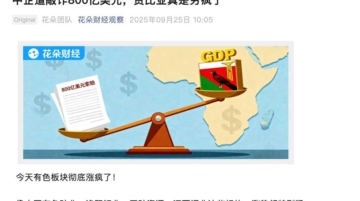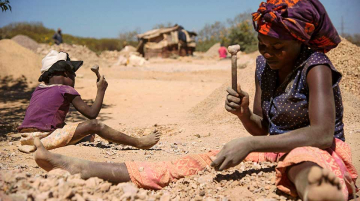
Is Africa’s gold rush worth the life-and-death risks? Armed militants regularly storm mines in Ghana, Mali, and the Democratic Republic of Congo, wrecking equipment, kidnapping workers, and demanding ransoms. Embassies have even urged Chinese firms to pull out.
Yet with gold prices topping $3,400 an ounce, the lure is irresistible. Mines look like underground ATMs, and Chinese companies keep digging. A commentator on the video platform Bilibili recently broke down the high-stakes math behind their gamble.
The calculation is driven by a global squeeze: soaring gold prices on one hand, and stagnant production on the other. With the world’s best deposits already claimed, unstable but mineral-rich regions in Africa are the final frontier. Companies like Zijin Mining and Shandong Gold are making multi-billion-dollar bets there because, unlike in stable countries, they can acquire prime assets at a discount.
But the discount comes with extreme risk. These companies operate in a “Coup Belt” where military takeovers are common, roads can be sealed off by warlords, and policies can change overnight. Chinese miners are now prime targets for a confluence of reasons: their production share in Africa has surged, they control highly profitable high-grade mines, and the retreat of Western military assistance has left a power vacuum, giving local militias more freedom to attack. Higher gold prices further incentivize these assaults, as local groups seek a share of the soaring profits.
So how does the math possibly work? It’s all in the risk ledger. Even with production costs around $1,300 an ounce, the current price leaves a profit margin of over 100%. A high-grade mine can generate immense, predictable cash flow for decades.
To mitigate the danger, companies don’t just rely on luck or local guards. They use sophisticated financial armor: pre-selling future gold output to lock in cash, using futures markets to hedge against price crashes, and building models where a project only needs to survive half its lifespan to become profitable.
The commentator also reveals the crucial gap between Western and Chinese approaches. For decades, Western nations have proactively protected their strategic overseas assets—mines, oil fields, and ports—with national military power, treating them as extensions of their national security. In stark contrast, the Chinese approach has largely remained reliant on hiring local security and maintaining community relations. While sufficient in stable times, these measures are utterly inadequate against a warlord’s insurgency or a widespread anti-foreign backlash, leaving companies helpless.









